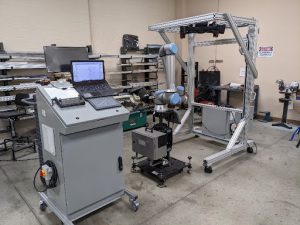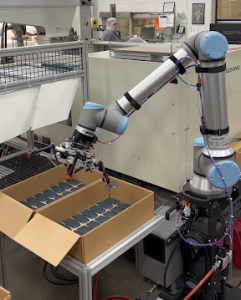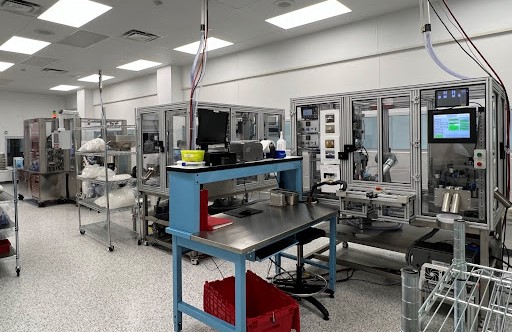As tools improve, processes and productivity inevitably follow suit. This principle has guided manufacturers across various industries and countless years, and the modern wave of automation is no exception.
To that end, Meadville, PA-based specialty assembly and injection molding firm C&J Industries is in the midst of an expansive and ambitious effort to implement cobots (or collaborative robots) into its established workflow, with the intended effect of supplementing the existing human workforce.
With any implementation of new technology – especially those that bring about adjustments to workflow – some growing pains are inevitable. However, so far, the push for automation at C&J has proceeded with minimal friction according to automation engineer Jeremy Slagle.
“I think it was a pretty smooth transition,” Slagle said. “Regarding all these various parts of the product stream and all the interruptions that introducing this new part of the process can cause … I think the whole team, everyone involved at the production level at C&J are very accommodating to these changes, especially the ones that help us.”
One factor that has been key to C&J’s successful integration of automation technology is the company’s overarching goal of leveraging the new equipment to support members of the assembly teams without making their positions obsolete.

“(The cobots are used) not as a replacement, but as a helpful tool for our operators to use that reduces the workload on them and opens up more time for them to do things that aren’t those menial tasks,” Slagle said. “For example, one robot works on a printing process that previously took two or three operators, and now it’s down to one operator, who essentially hands off the molded part to the robot and the robot takes it and handles all the printing operations, then essentially hands it back once the part’s all done in a timely fashion.”
In this way, the cobot functions as a programmable partner capable of complex tasks, boosting the efficiency of the entire workflow.
“It works out nicely for that operator to have a comfortable pace, hand off these parts to a robot, and when they receive them back, they have time to inspect it, package it, and move on to the next part,” Slagle added. “They’re very nicely timed with each other. And our operators really like using the robots. That’s sort of the angle I’ve been keeping with the implementation – they’re not a replacement for anybody, they’re there to use and help them do their jobs easier.”
As the C&J staff become more comfortable working alongside cobots and other automated equipment, Slagle said the goal is to apply these new processes to a broader scope of projects for a greater variety of clients.
“When we made our initial investment in our first cobot setup, we went with a very modular mindset where we got all the bits and pieces to be able to do a lot of different jobs with it,” Slagle said. “We’re making the investment in ourselves to be proficient in setting these things up ourselves and being able to move them around the plant efficiently. We’re still moving them around and trying different things. The big emphasis is on flexibility.”

Cobots built to operate alongside and under the close supervision of human technicians are only the beginning. Innovations are routinely being applied to these devices; including advanced methods of autonomy such as camera-enabled vision guidance.
“Not only did we invest in the six-axis robot, but we also invested in control systems, two different vision systems, getting into vision-guided robotics – 2D and 3D – where the robot essentially has the vision to drive itself,” Slagle said. “One of the new technologies we’ve been working on is bin-picking vision, which isn’t really new to the industry but it’s pretty new to us, to where a camera mounted on a gantry above a box of parts can take a picture and then it tells the robot how to go get it without you having to actually program all those points.”
As C&J continues to invest in innovation, the company also continues to invest in its employee-owners. Slagle, having begun his career with C&J as an intern in 2014 during his education at Penn State Behrend, is a prime example of this investment. Since his recent promotion from manufacturing engineer to automation engineer, he has taken on greater responsibility and a more personal perspective on the company’s evolution.
“It’s nice that the company where I started at, did a lot of early learning at, and going from my learning phase to now – I really feel like I’m a part of our growth. I’m sharing the responsibility and just feeling like I’m a part of the company that’s really helping it grow at this point.”
Looking ahead, Slagle hopes to “stay the course” by continuing to take an active role in C&J’s automation journey and ongoing expansion.
“The level of automation we were at 10 years ago versus now is very different, and more and more of it’s coming in all the time. It just feels like we’re on a good path and I’m just here to keep us moving in this direction and help us keep growing.”
For more information about automation at C&J Industries, or if you have questions about how we’re using cobots, please contact us.


